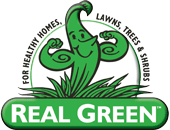What is behind the changing
of leaf color?
Leaves contain raw materials, products and by-products, in chemical form and some with
color. As the leaf is abandoned by the tree the green chlorophyll is broken down and recycled by the
tree, leaving behind other colored chemicals. If the major chemical remaining in the abandoned leaf
is red, then the leaf turns red. If itís yellow, then the leaf turns yellow,
and so on. The yearly variation in color intensity is due to varying
weather conditions, which can affect the balance of chemicals and their
composition in the leaves. Amounts of rainfall, sunlight, temperature,
humidity and other factors effect how bright, quickly, and long the season will be
each
year. Color-changing leaves make for a beautiful display, but
early changes in leaf-color can be a sign that your tree is stressed and is
susceptible to insect and disease attack.
If the leaves on a trees seem to have gotten a
jump start on fall compared with those on similar trees in the area then
you may want to consult a professional technician, who can identify
problems and offer solutions. Premature colors can be an indication that a tree isnít
strong enough to handle insects and disease organisms that may attack
it or cold weather.
Occasionally only one or two limbs of the tree will show premature fall
color, which could be a sign of a disease at work, weakening only the
infected limbs. The more common situation is for the entire tree to exhibit
premature fall coloration, a phenomenon usually linked to root-related
stress. Trees respond to these stresses by trying to minimize
above ground growth.
